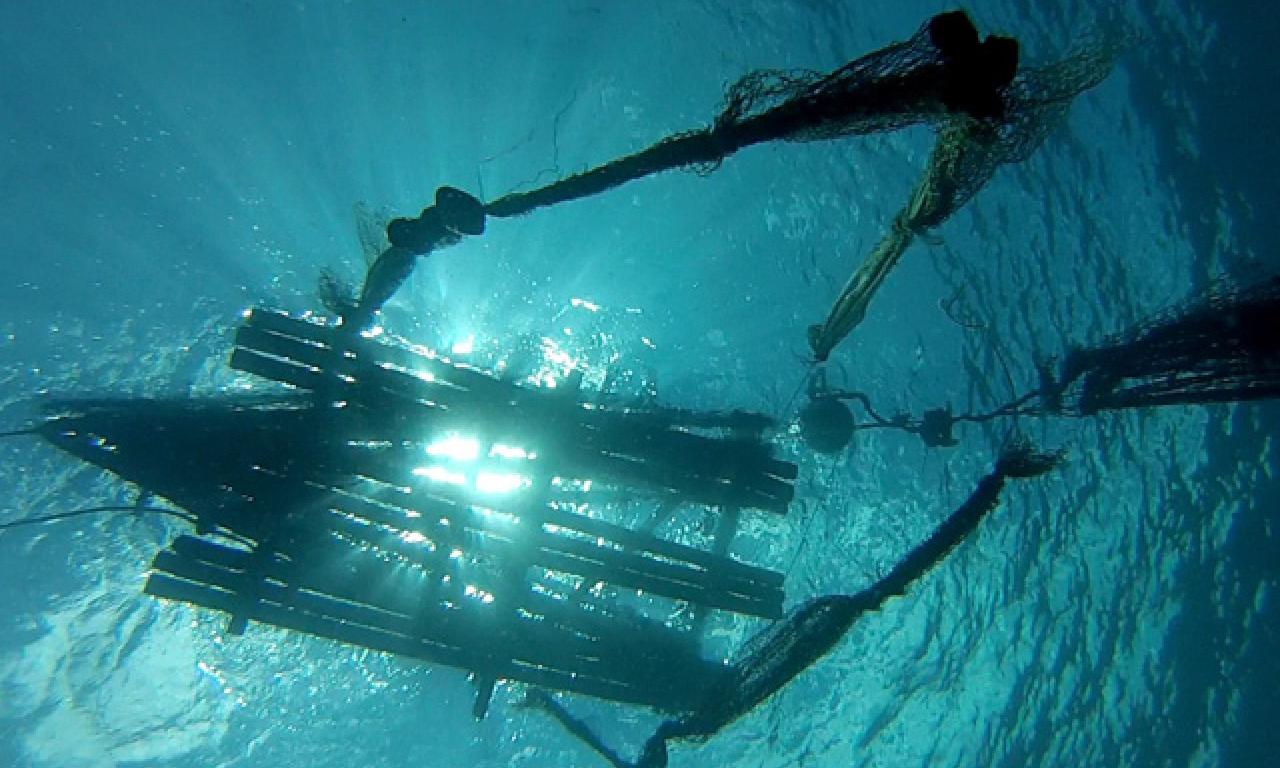
World Oceans Day, on 8 June, is a chance to celebrate our oceans. Oceans feed millions of people yearly, are home to diverse marine life and help to regulate our climate.
Recommended publications
- Optimising the use of nearshore fish aggregating devices for food security in the Pacific Islands
- The contribution of nearshore fish aggregating devices (FADs) to food security and livelihoods in Solomon Islands
World Oceans Day, on 8 June, is a chance to celebrate our oceans. Oceans feed millions of people yearly, are home to diverse marine life and help to regulate our climate.
To ensure the health and safety of our communities and future generations, we have to protect and use the oceans’ resources wisely. One instrument helping coastal communities minimise their reliance on nearshore reefs, thereby helping to safeguard our oceans, are fish aggregating devices.
A fish aggregating device (FAD) is a man-made object to attract oceanic fish such as tuna. They are widely used in tropical and subtropical regions to concentrate oceanic fish and make them easier to catch.
Offshore vs nearshore FADs, what’s the difference?
Offshore FADs are big floating oceanic platforms that purse seine, or drag net, tuna fishers use. These FADs attract huge numbers of tuna, and usually have a radio beacon attached to them allowing fishing boats to follow the FADs and catch more fish with less effort.
These FADs have drawn criticism from conservation NGOs such as Greenpeace. They argue that offshore FADs enable commercial fishers to land a greater proportion of the oceanic commercial catch. Use of such FADs often results in bycatch of many juvenile and unwanted species, which deplete fish stocks and threaten vulnerable marine line.
Nearshore FADs, on the other hand, are smaller and anchored to the sea floor near the coast. These enable easy access for coastal communities, including by paddle canoe. In Indonesia and the Pacific, nearshore FADs are made from bamboo rafts or concrete drums. Fishers use methods such as troll line fishing, line fishing and spear fishing to catch fish around the FADs.
No passing fad in the Pacific
FADs are not a new innovation, having been used in the industrial sector for a long time. Yet nearshore FADs are a relatively new intervention.
In the Pacific, many communities depend on coastal fisheries for food and a source of income. Traditionally, seafood has been the most important source of protein. But forecasts show that coastal fisheries in many countries in the region will not be able to provide enough fish to meet peoples’ needs by 2030. Contributing factors include overfishing, pollution, climate change, population growth and coastal development.
To avoid the projected supply deficit, sources of fish need to diversify and the management of coastal fisheries will need to improve. Nearshore FADs provide one such solution. To this end, WorldFish has worked with coastal communities in Solomon Islands, Vanuatu and Timor-Leste to deploy FADs.
The benefits and challenges of nearshore FADs
FADs help increase supply of fish, as demonstrated by a WorldFish study in 2014 in the Solomon Islands. Across the four studied villages, nearshore FADs were found to contribute up to 45% of the total annual fish catch. FADs were most utilized in villages with limited access to diverse or productive fishing grounds. Villagers believed FADs increased household income as well as providing a source of fish for community events.
Beyond increasing fish supply, FADs can help protect reef ecosystems and improve nutrition. For example, nearshore FADs are typically placed far enough away from a reef to avoid attracting reef fish. Because its easy to catch fish around the FAD, less people are fishing on the reef, reducing overfishing.
FADs make it easier for fishers to catch oceanic fish, which tend to have better nutrition quality than reef fish. Small, oceanic fish are rich in oils and omega 3 fatty acids, which are vital for the healthy functioning of the body. Reducing consumption of reef fish also reduces the risk of ciguatera poisoning, a foodborne illness caused by eating certain reef fish.
That said, implementation of FADs is not without its problems. Pre-existing issues around land tenure (including nearshore waters) and access rights can make the logic of FAD deployment and use more difficult. Fishers can become jealous of other communities that receive a FAD and the desire for the equipment used to construct the FAD. Their deployment, in the absence of a broader understanding of the local context, often causes them to fail. Vandalism, for example, is a recurrent problem, and many FADs often do not remain in the ocean for more than a few weeks or months
Healthy oceans, happy communities
Addressing these challenges is key to ensuring communities and policymakers support the continued use of nearshore FADs. In late June, WorldFish and the Secretariat of Pacific Community will jointly host a workshop to bring together experts to discuss best practices for nearshore FADs in the Pacific region.
For many Pacific islanders, coastal fisheries are central to their lives, providing daily food and serving as one of the few sources of income. Nearshore FADs are helping fishing-dependent communities halt the decline of their reef resources and protect marine ecosystems, ensuring our oceans remain healthy and productive for all generations to enjoy.